Whether you are choosing lighting for your new home or doing a single room lighting upgrade, our Remodeling Guide will help through the process. Even though lighting may be a small portion of your remodeling budget, it has a substantial impact in the overall appearance of any room. Work with lighting experts to save time and money.
Undercabinet Lighting Benefits
Working in an underlit kitchen is frustrating. The simple tasks of food preparation – chopping, cooking, and plating – become an inconvenient annoyance. The solution? Undercabinet lighting. The best kitchen lighting includes overhead lighting in combination with surface-directed lighting that is easily mounted on the undersides of cabinets. The types of undercabinet lighting range from LED strip lighting to puck lights to linkable light bars.
Talk to the lighting professionals at Turney Lighting to learn how to use undercabinet lighting in your kitchen.
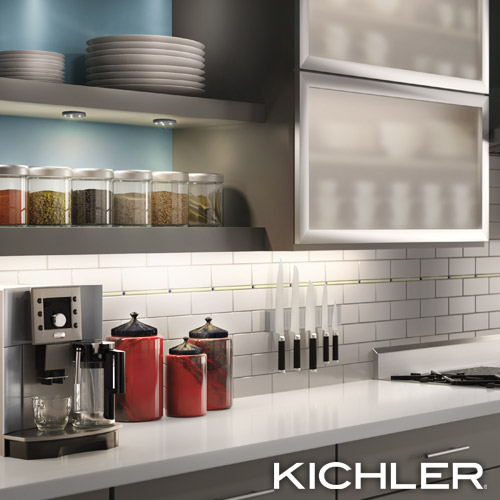
It Increases Kitchen Visibility
It Adds Home Value

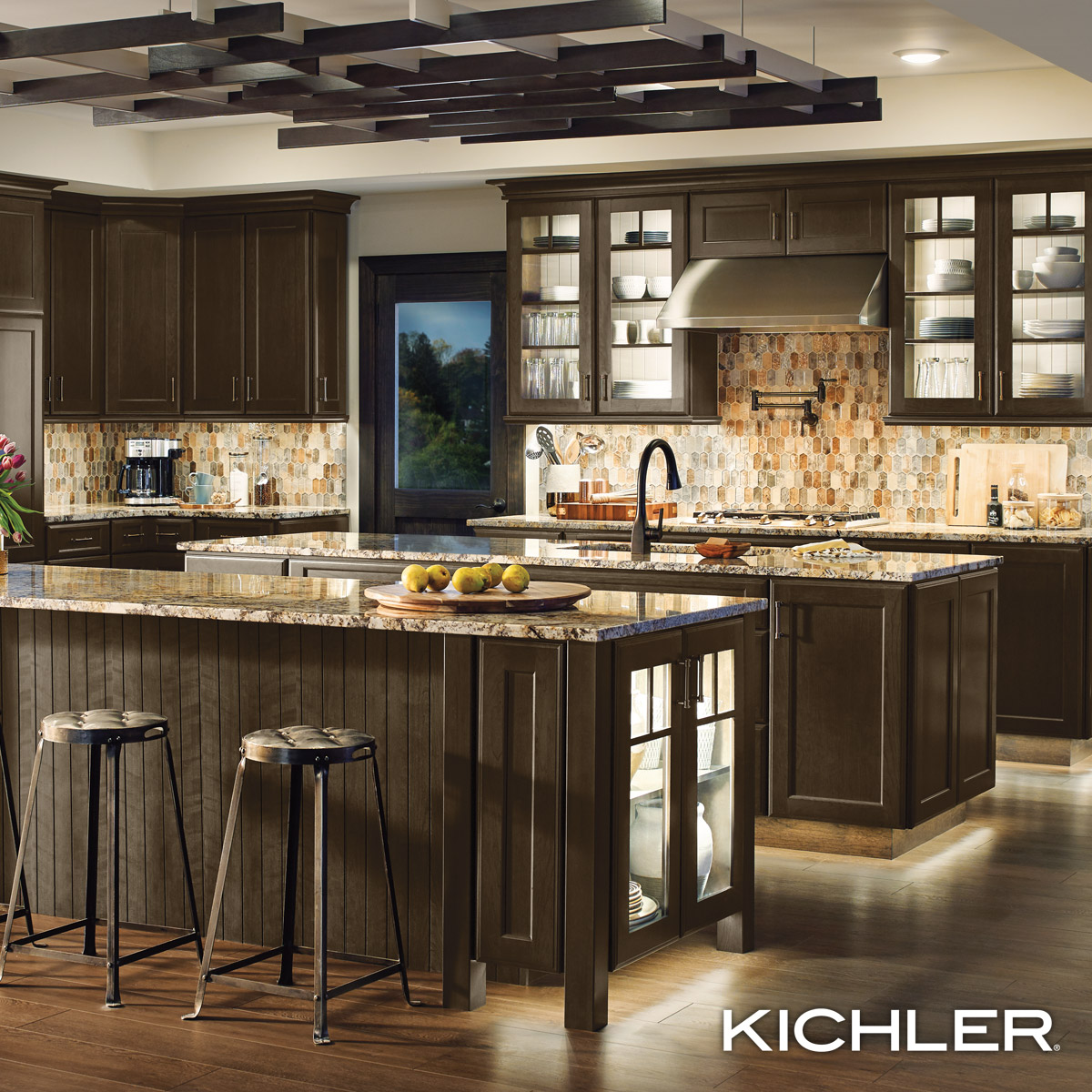
Smart Lighting Controls
As a leader in the fast-growing smart home market, Lutron provides the perfect solution for any size home, and any budget, whether you’re building a new home or want to upgrade your existing one.
Get Connected
Lutron works with more smart home devices than any other smart lighting control brand.
It Just Works
With over 1,000 dimmable bulbs, regular bulbs can now be made smart, starting with control at the switch.
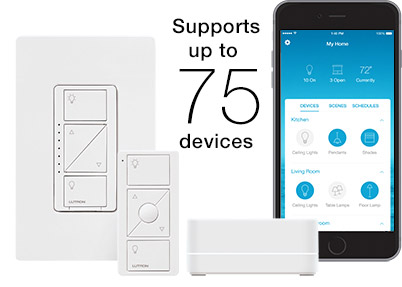
Caseta
– Gateway system to smart lighting control
– Supports up to 75 devices; start in one room and easily expand into others
– Essential dimmer styles and wireless remotes; available in gloss color finishes
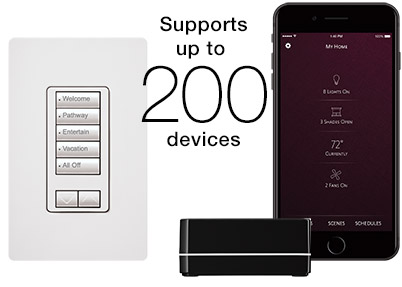
RA2 Select
– Whole home lighting control made simple
– Supports up to 100 devices
– Versatile wireless remote functions as a keypad for scene control
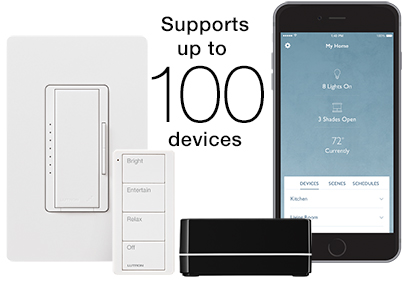
RadioRA 2
– Expanded wireless whole home lighting control
– Supports up to 200 devices
– Utilizes backlit, custom engraved keypads, customized scene control, and Lutron wireless shades
– Works with Lutron wired and wireless sensors
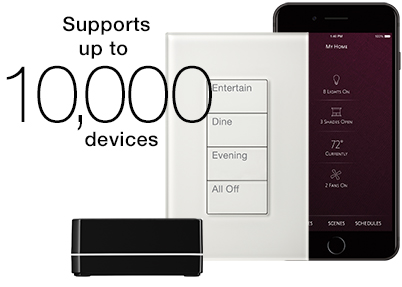
HomeWorks
– Most advanced, luxury whole home system
– Supports up to 10,000 devices
– Offers the most keypad style and color options, as well as customized keypads
– Hidden panels eliminate dimmers and switches on the wall
– Works with Lutron thermostats
How To Size Your Chandelier
The sparkle and dazzle of a well-placed chandelier defines and enhances the mood of any room. A chandelier that is too large can easily overpower a room and its inhabitants; one that is too small becomes insignificant and decreases the perceived value of the entire space. By following a few interior design guidelines for choosing the correct size, you will maximize the impact of the fixture. Room size affects chandelier size, but the type of space also affects the size.
3 Steps to Size a Dining Room Chandelier
Our step-by-step guide will help you determine the general sizing and placement of a chandelier for your dining room, kitchen, or breakfast nook based on the size of your room, living space, or your furniture. You can also use these measurements in other areas of your home, some with special considerations. See our placement guidelines for living rooms, bathrooms, foyers, and long hallways below.
Step 1. Measure Room Length and Width to Determine Chandelier Width
Step 2. Measure Ceiling Height to Determine Height
Step 3. Measure Ceiling to Table to Determine Chain Length
Step 1. Determine Chandelier Width
– Measure the length and the width of the room
– Add the two measurements
– Convert the measurement unit from feet to inches
The converted sum is the ideal width (or diameter) of your chandelier. For example, if your dining room is 10′ x 18′, a chandelier with a 28″ diameter or width is the best fit for your space. This applies regardless of the shape of the chandelier. However, for round or rectangular fixtures, the length should be at least one-half, but not more than two-thirds the length of your table.
You can also use the square footage of your room to help estimate the size of chandelier that would be proportional. We’ve provided a quick reference chart below showing the appropriate width or diameter by square footage. Square footage is calculated by taking the length of the room multiplied by the width of the room. Using the example above, a 10’ x 18’ dining room would be 180 square feet, and a chandelier around 28” in diameter would be proportional.
Sizing By Table Size
To determine the width of your chandelier by the size of your table, assuming you have an open floor plan or just want to make the chandelier the centerpiece of the room, we recommend that the width or diameter of the chandelier should be one-half to two-thirds the width of the table. With ceilings over the standard eight feet, you base the size of the chandelier on the room size or living space. In this case, you would want to make sure the width of the chandelier is one foot less than the width of the table, to ensure six inches of clearance on either side of the table.
Hanging Two or More Chandeliers
To hang more than one chandelier over a table, divide the table width by the number of chandeliers plus one and use the result as the width or diameter for each chandelier. Install the chandeliers spaced the same distance apart as the width of the chandeliers. For example, if you would like to hang two chandeliers over a table that is 72 inches long (72 divided by 2+1), the width of each chandelier would be 24 inches, and they should be hung 24 inches from each end of the table.
Step 2. Determine Chandelier Height
– Measure the ceiling height, from the installation site to the floor. At this stage, ensure that the installation site is at least 4 feet away from any adjacent walls.
– For every foot, estimate 2.5″ to 3″ of chandelier height
– Multiply the ceiling height by the chandelier height
– Convert the measurement unit to inches
For example, if your dining room has an 8-foot ceiling, then a 24-inch chandelier is the best fit for your space. Click on the image below to print our chandelier sizing guide.
Please note: The above calculations assume you have a ceiling height proportional to the room size. Therefore, if you have a large room and a low ceiling, such as an open floor plan, or a high ceiling and a small room, such as a foyer, this may not apply. See our placement guidelines below to learn more.
Step 3. Determine Chain Length
If your ceiling is less than eight feet high, your dining room chandelier should hang 30″ to 34″ from the table top to the bottom of the chandelier and be centered over the table. If your ceiling is higher than eight feet high, the recommended clearance is 36 to 40 inches.
– Measure the ceiling to the tabletop in inches = _____
– Minus the recommended installation height = 32” (8’ or less ceiling) or 38” (>8’ ceiling)
– Minus the chandelier height determined in Step 2 above = _____
– Chain length = _______
How To Pick The Right Light Bulb
Everyone knows that LED light bulbs are the best option for lighting your home nowadays. They are more efficient and can save you hundreds of dollars each year on utility costs. But how do you know what type of LED bulb to choose?
Types of LED Bulbs
Begin by assessing the location of the bulb. There are several types of LED bulbs:
- Standard LED light bulbs
- Can LED light bulbs
- Flood LED light bulbs
- Track LED light bulbs
- Tube LED light bulbs
Standard LED bulbs, sometimes called A19 bulbs, are used for many ceiling lights, wall lights, and table and floor lamps, as well as some bath lights.
Kitchen ceiling lighting often utilizes Can or Flood LED bulbs, depending on the width of the opening. Existing track lighting can be adapted with LED bulbs, but check with your lighting professional for the best replacement bulbs. Tube LED bulbs are most often used in office or commercial settings, and sometimes also in kitchens or workspaces.
Amount of Wattage
The brightness of all types of LED bulbs is measured in lumens. A higher lumen number means a brighter light.
Incandescent bulb brightness is measured in watts. Because LEDs use far less energy than incandescents, a better way to gauge the brightness of LED bulbs is to compare lumens.
For example, a traditional 60-watt light bulb will emit around 700 lumens. An LED bulb with comparable lumens uses less than 10 watts of electricity.
Lumens = the amount of light the bulb gives off
Wattage = the amount of energy a bulb uses
To choose the most energy-efficient light bulb without sacrificing brightness, check the lumens per watt ratio on the bulb’s packaging. The greater the lumens-to-watts ratio, the more energy-efficient the bulb.
Color Temperature
Another quality of LED bulbs to consider is the color temperature. As you can see in the chart below, the color temperature of LED bulbs can range from a warm amber to bright daylight. Choose a bulb that gives you the type of light you wish for the room and how you use that room. For instance, you may buy a warmer temperature bulb for your table and floor lamps in the living room, when you may want a comfortable, ambient light for entertaining or watching TV. However, you may opt for a neutral or cooler white light for your desk lamp, when you want to see clearly and avoid eye strain or fatigue. An outdoor fixture usually provides the best overall light at a neutral temperature, say, 4500 lumens.

There are many other options for LED replacement bulbs, depending on the fixture, the needs of the room or space, and your personal preferences. Our lighting professionals are familiar with all the new LED bulbs specifications and can guide you in making the best choice for your home.


